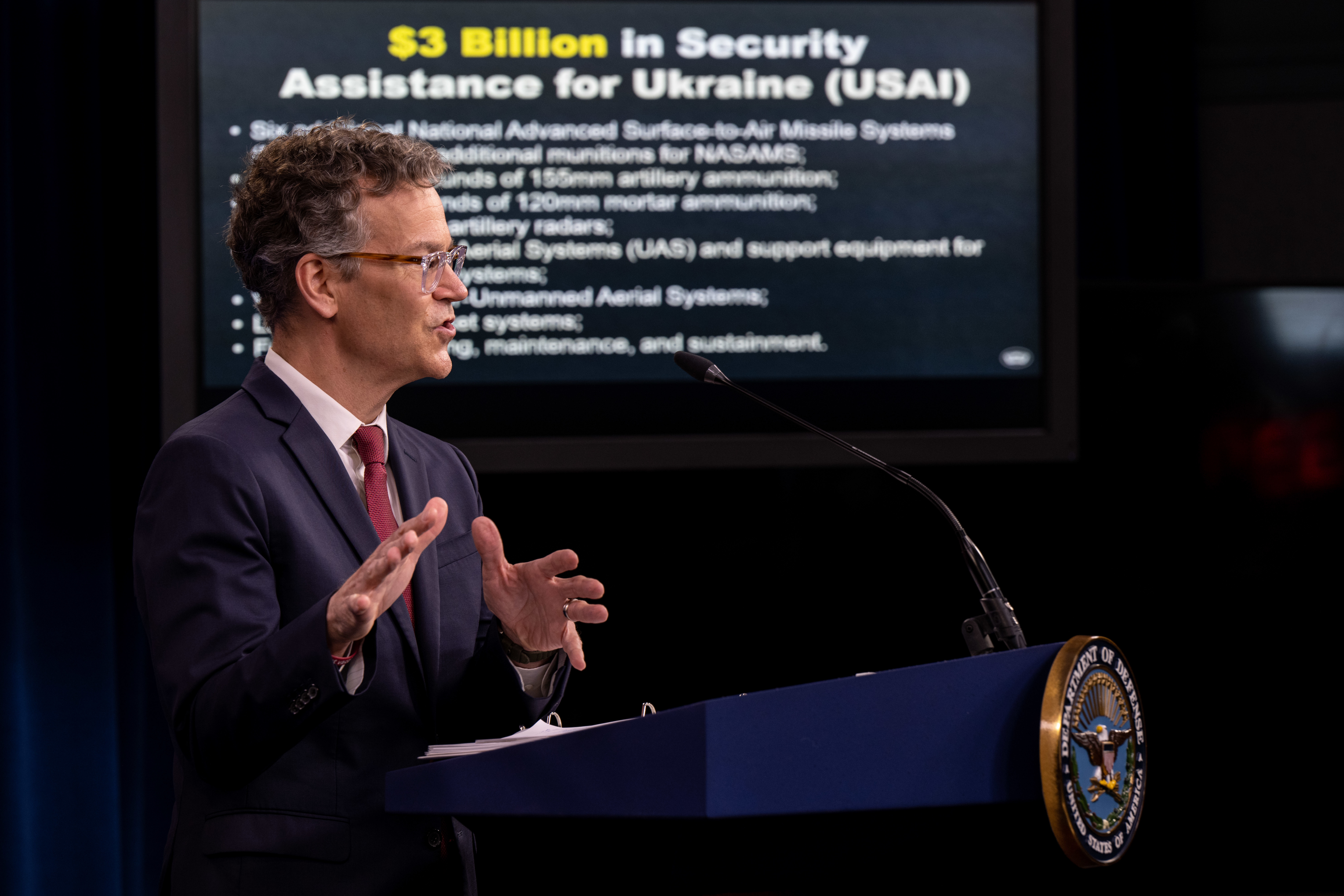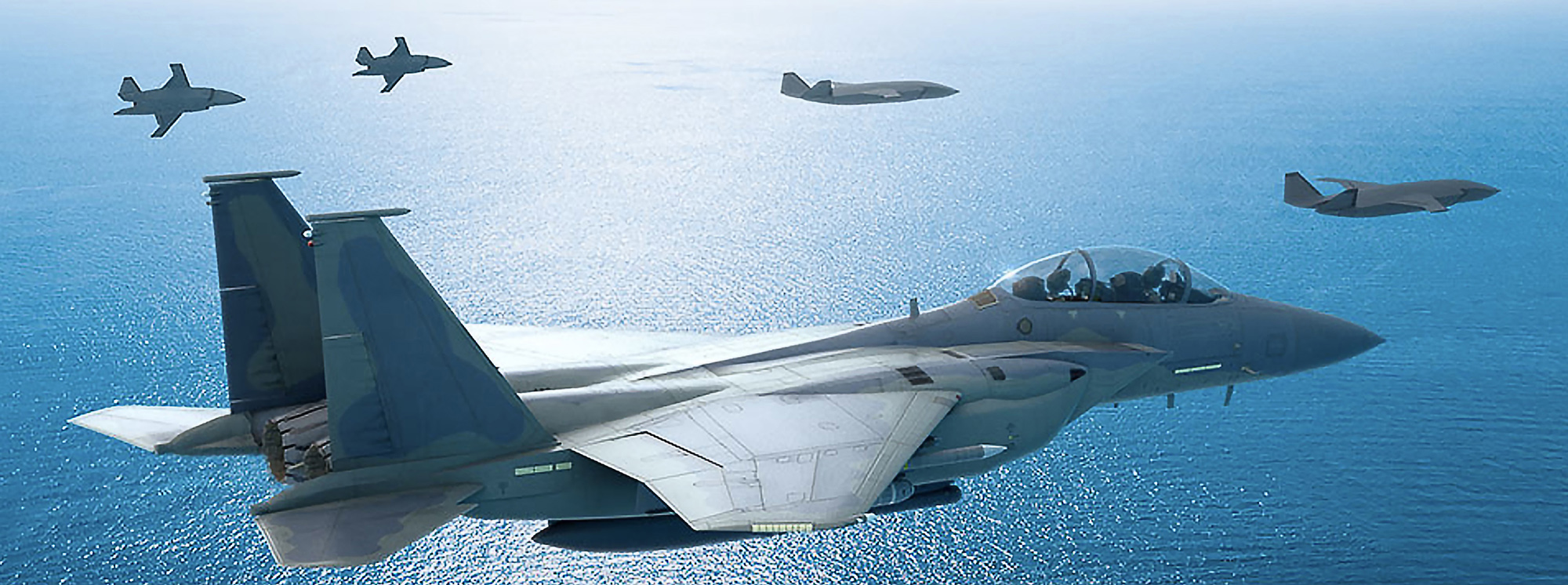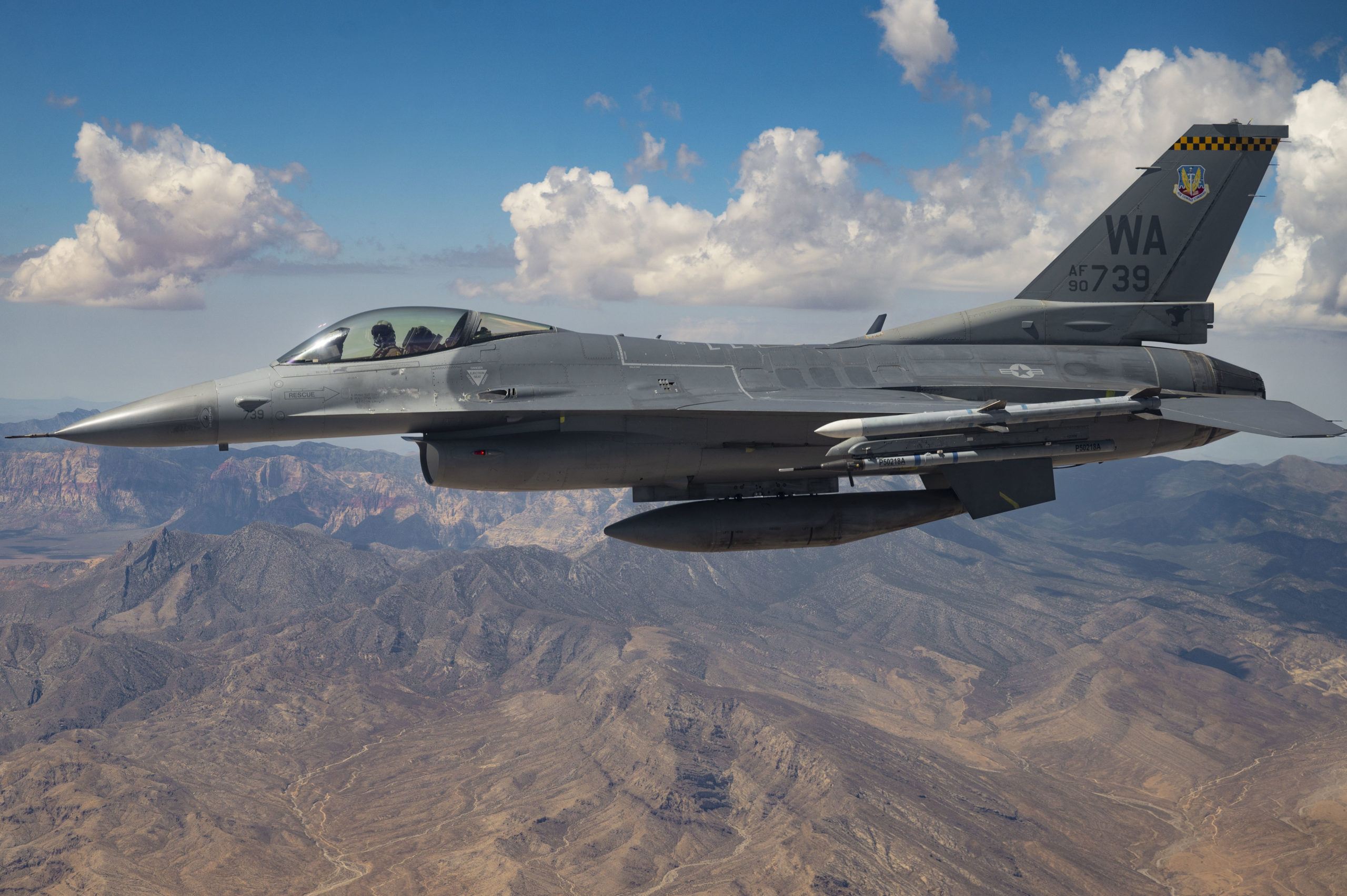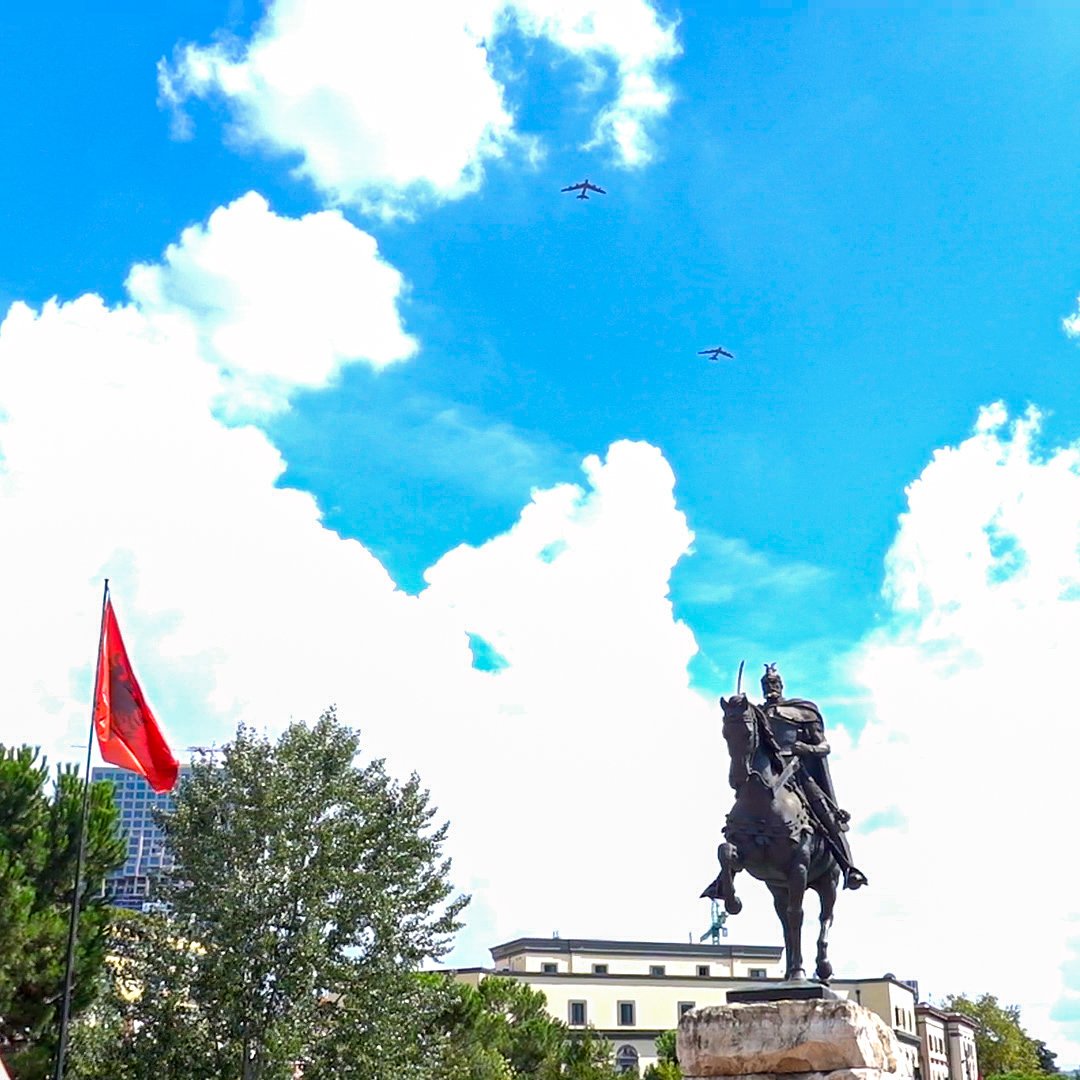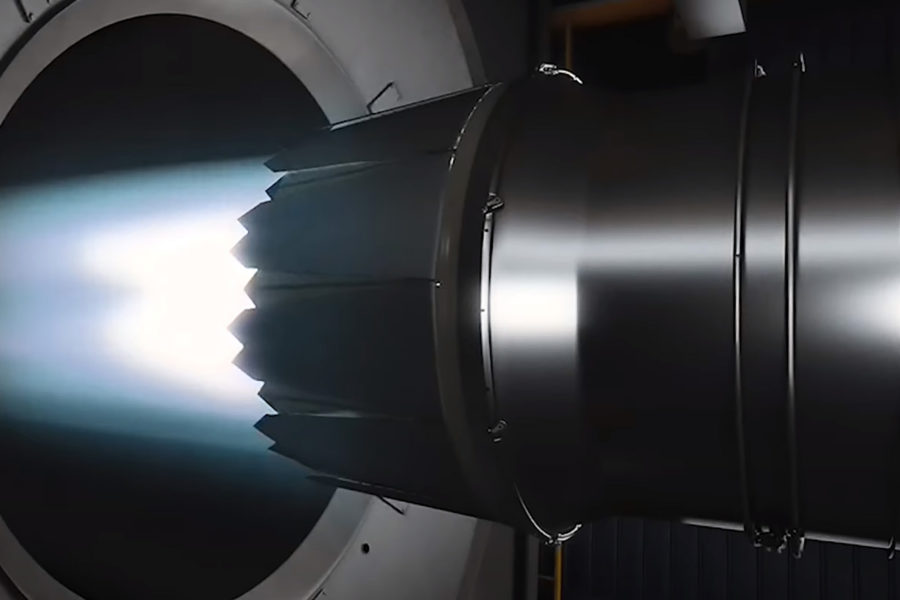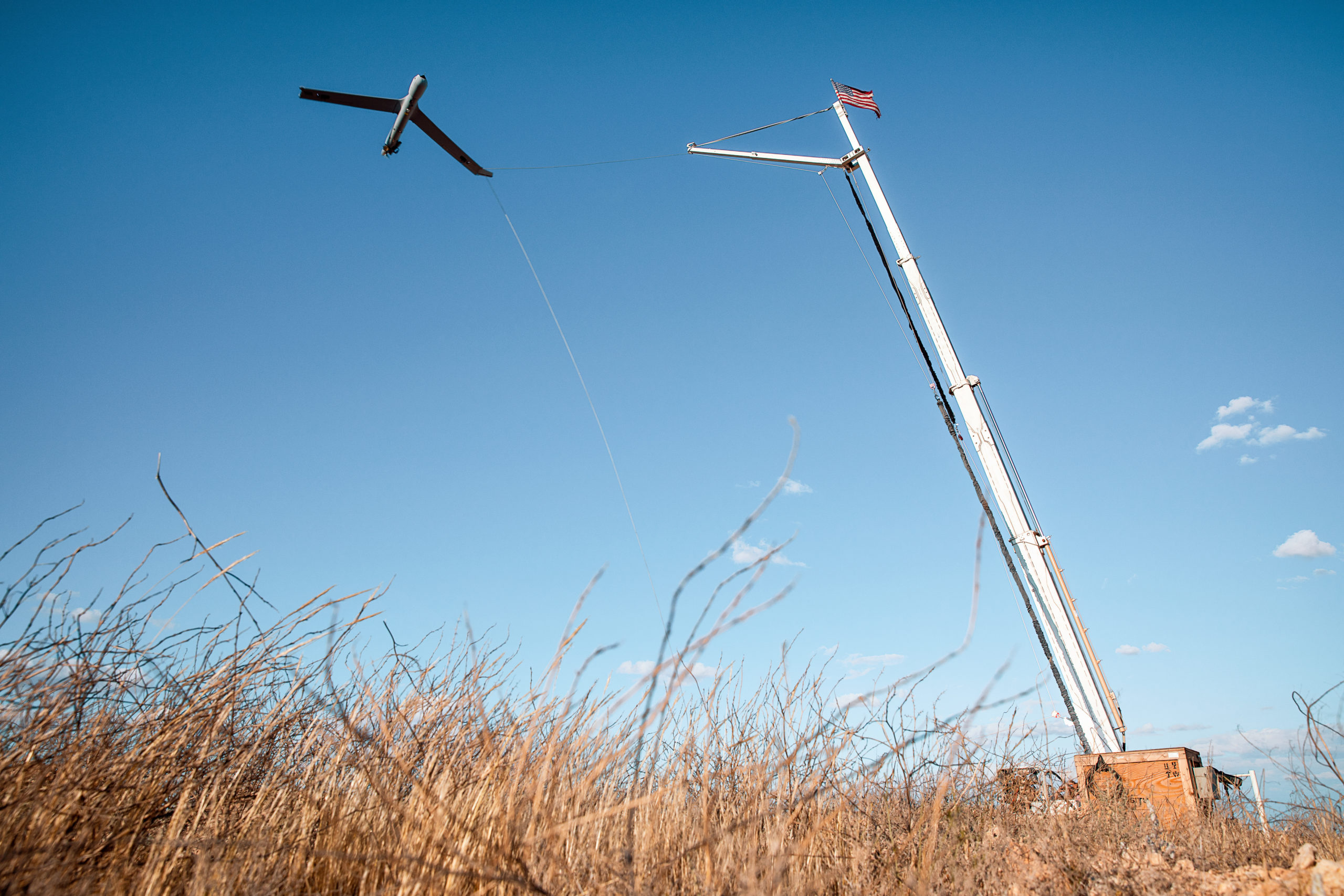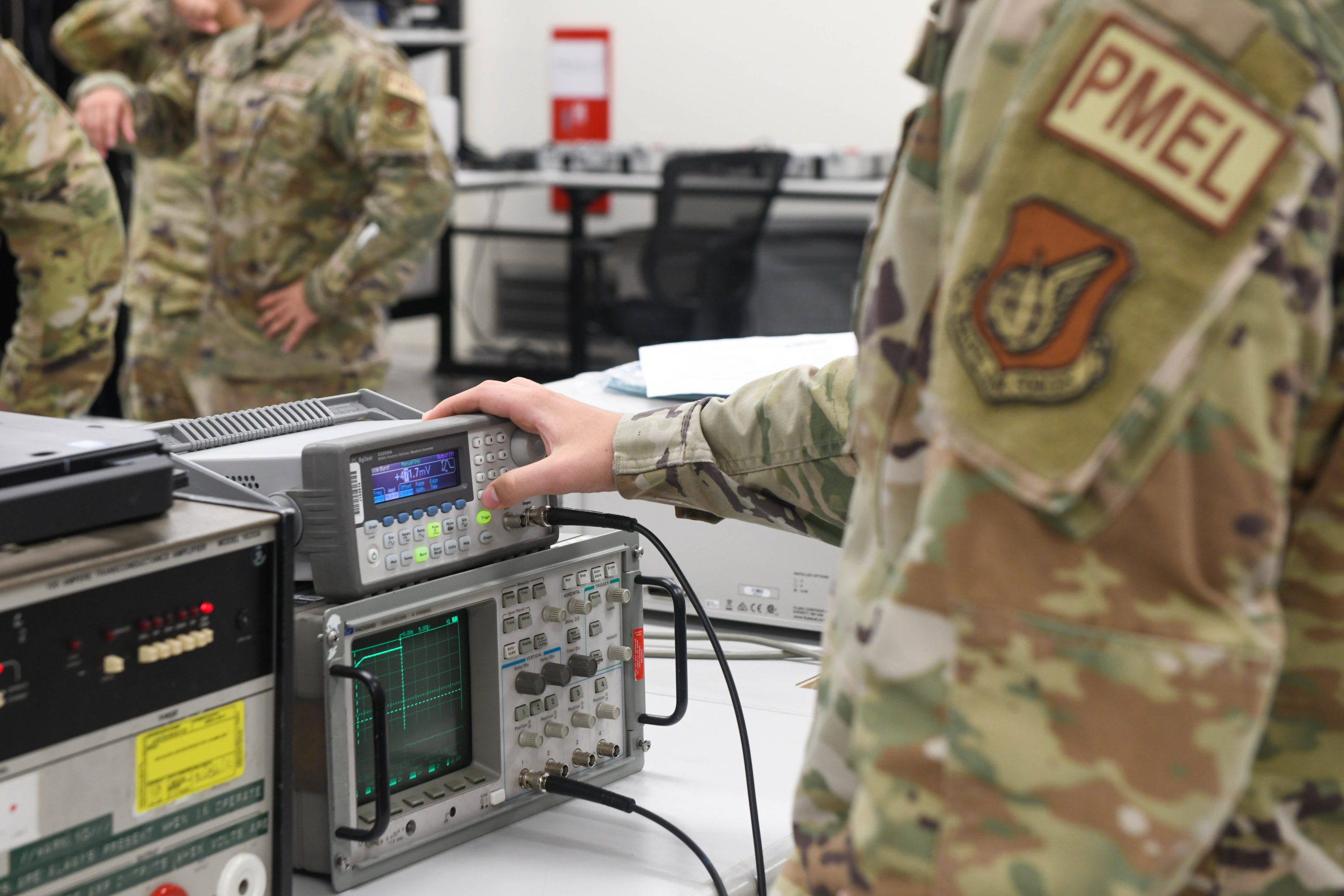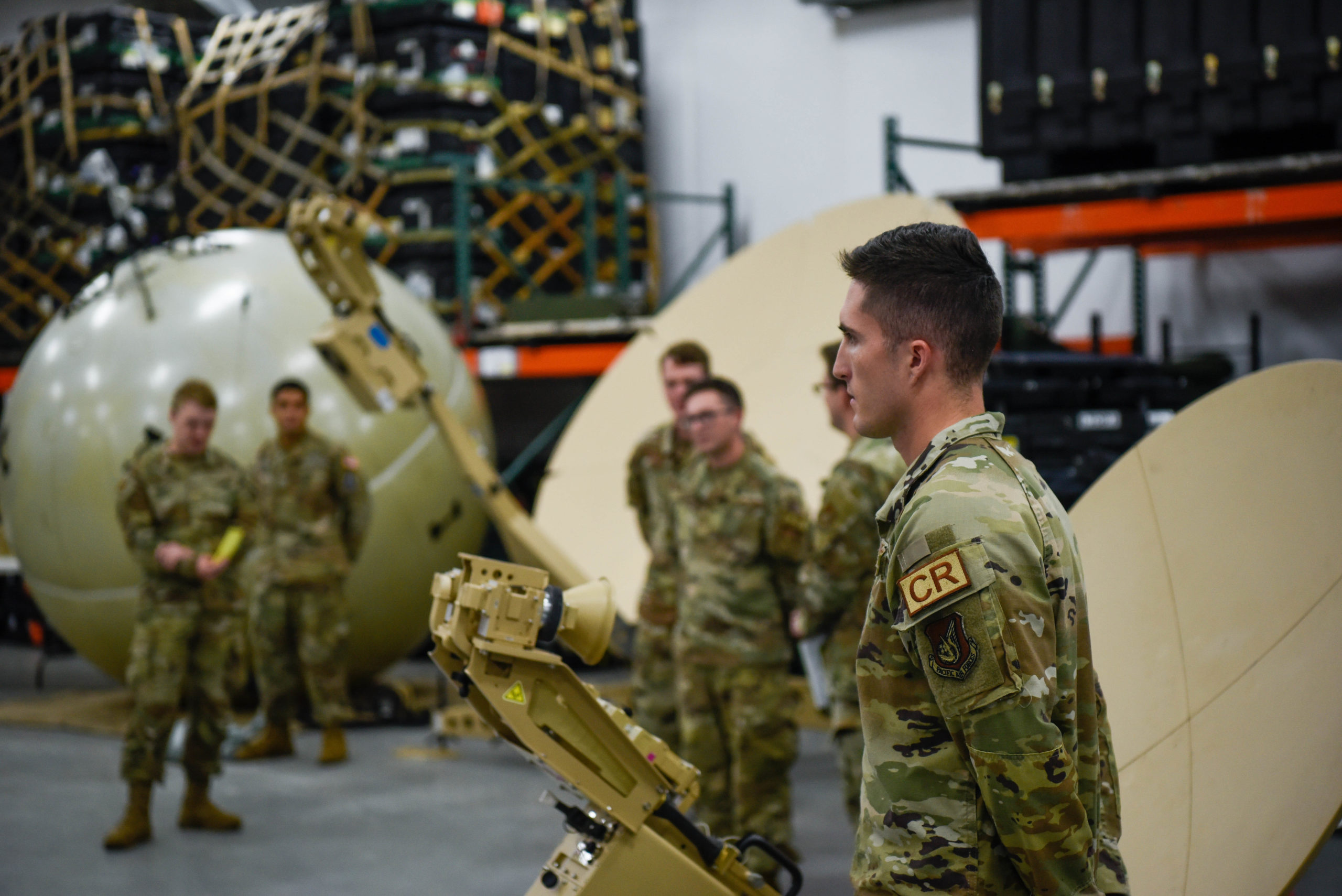President Joe Biden is making a bet on Ukraine’s ability to withstand war and deter Russia for years to come, announcing on Ukraine’s independence day, Aug. 24, a $2.98 billion defense package that builds out a future force with high-end air defenses, radar, and counter-unmanned aerial systems that may take years to deliver. A defense official also said combat jets “remain on the table” but are not part of the new package.
The largest defense assistance package yet relies on a lengthier contracting process that buys targeted new weapons for Ukraine instead of drawing down existing U.S. stocks. It also refrains from the longer-range weapons Ukraine seeks to reach Russian supply lines as they adjust to greater stand-off distances.
The Pentagon said the new package will include six additional National Advanced Surface-to-Air Missile Systems (NASAMS) with munitions to add to the two NASAMS promised by Biden in a July 1 announcement that have yet to be delivered.
The package also includes 24 counter-artillery radars; Puma unmanned aerial systems (UAS); support equipment for Scan Eagle UAS systems; the VAMPIRE counter-UAS that can shoot down UAS threats; laser-guided rocket systems; and hundreds of thousands of additional rounds of 155 mm artillery and 120 mm mortar ammunition. The package now pushes U.S. defense assistance to Ukraine to more than $13.5 billion since January 2021 and $15.5 billion since Russia invaded Ukraine and annexed Crimea in 2014.
“Vladimir Putin has not given up on his overall strategic objectives of seizing most of Ukraine, toppling the regime, reclaiming Ukraine as part of a new Russian Empire,” Undersecretary of Defense for Policy Colin H. Kahl said at an Aug. 24 Pentagon briefing.
“What he has done is lengthened his timeline in recognition [that] he’s off plan,” he added. The new package is not for the current fight. “It’s not relevant to the fight today, tomorrow, next week. It is relevant to the ability of Ukraine to defend itself and to deter further aggression a year from now, two years from now.
The assistance package is expected to arrive to the battlefield within one to two years, demonstrating the bureaucratic hurdles that are required for the contracting and delivery process versus presidential drawdowns. The NASAMS Biden promised in July are expected to arrive in September.
Ukraine ‘Reassured’ as Air Raid Sirens Ring Out
A Ukrainian defense official told Air Force Magazine by phone from Kyiv that the defense package is welcome news but that assistance is needed urgently to defend territory and retake lost ground.
“Everybody is grateful, excited, and reassured—reassured that the military aid to Ukraine from the U.S. will continue,” said Yuriy Sak, adviser to Ukraine’s minister of defense. “It is equipping the Ukrainian army with the means that we need to, first of all, protect our land; and second of all, to begin planning the de-occupation counter-offensives.”
On Ukraine’s Independence day, Sak said air raid sirens rang all day in the capital, with Russian missile strikes detected at civilian targets across the country, including in the regions of Dnipro, Mykolaiv, Poltava, Kharkiv, and Zaporizhzhia.
“We are having too many air raid sirens today. I mean, they keep ringing out. There is one right now in Kyiv,” Sak said at approximately 7:45 p.m. local time Aug. 24. “It’s independence day, but everybody’s on high alert.”
In several areas, Ukrainian air defense systems were able to shoot down Russian missiles or drones, he said. The NASAMS, the same system used to defend Washington, D.C., would help protect civilian populations and vital military assets, once delivered.
Sak also said that while the new aid package helps Ukraine’s transformation to Western, NATO-standard weaponry, some key battlefield needs remain unanswered.
“We have reached the stage of this war where we need a longer firing range of these weapon systems,” he said, noting that High Mobility Artillery Rocket System (HIMARS) given by the United States include precision artillery Guided Multiple Launch Rocket Systems (GMLRS) with a range of 80 km or about 50 miles.
“Even with this firing range, we were able to destroy the ammunition depots of our enemy, to destroy the so-called command and control systems of the enemy, but they are also learning from the battlefield experience,” he said.
Russia has begun to move its supply chains and logistical hubs beyond 80 km.
“Which means right now we need more sophisticated weaponry to be more efficient,” Sak said, describing a Ukrainian request for the Army Tactical Missile System (ATACMS), which can fire surface-to-surface missiles up to 300 km, or 190 miles.
“ATACM missiles are something that are very firmly on our wish list, and we will continue to speak to our partners, to the U.S., with a view to getting them,” he said.
Asked by Air Force Magazine why the Pentagon did not include ATACMS missiles in the package, Kahl said DOD had assessed that they were not needed.
“It’s our assessment that they don’t currently require ATACMS to service targets that are directly relevant to the current fight,” he said.
Kahl said DOD has provided hundreds of precision Guided Multiple Launch Rocket Systems (GMLRS) for use with High Mobility Artillery Rocket Systems (HIMARS).
“We consulted very closely with Ukrainians about the types of targets they need to prosecute inside Ukrainian territory,” he explained. “The vast majority of those targets were rangeable by HIMARS using GMLRS as opposed to the much-longer-range ATACMS.”
Kahl did not respond to a question about Russia moving back its forces beyond the reach of the HIMARS.
‘Fighter Aircraft Remain on the Table’
As to the lengthy timeframe for delivery of the new systems, Sak pointed to a $775 million presidential drawdown package Aug. 19 that includes additional high-precision HIMARS ammunition.
Sak also said the introduction of AGM-88 High Speed Anti Radiation missiles (HARM), which can be mounted on Ukrainian Air Force MiG 29s, has helped to suppress enemy air defenses.
“Well, they’ve been used very efficiently … to suppress their defense systems in those areas where the intense fighting is going on,” he said.
Sak, however, lamented that the U.S. government has yet to make the political decision to provide Western aircraft or pilot training to better contest advanced Russian fighters and bombers.
“We understand that the political decisions to provide Ukraine with combat aircraft is still in the making, and it’s not an easy one,” he said.
Kahl said DOD’s current aviation priority is assuring that Ukraine can use its Air Force effectively in the current conflict, such as adapting HARM missiles to fire from MiG-29s.
“Fighter aircraft remain on the table, just no final decisions have been made about that,” he said.
Kahl said as it relates to future aircraft, Defense Secretary Lloyd J. Austin III tasked his staff to work with the Joint Staff and U.S. European Command on a “future forces picture” for Ukraine’s force for the mid- to long term in consultation with Ukraine.
Kahl said that even if fourth-generation aircraft were promised now, they would not arrive for years, and it is unclear whether Ukraine would be able to sustain the force without international assistance.
Still, news of the new package is reverberating to other partner nations, Sak said. United Kingdom Prime Minister Boris Johnson, in Kyiv for Independence Day, announced a 54 million British pound, or $63.7 million, defense package to Ukraine.
“The U.S. is taking the lead in assisting the Ukraine militarily,” Sak said. “It kind of encourages other countries to as well come forward and follow suit and provide Ukraine with more military assistance.”
